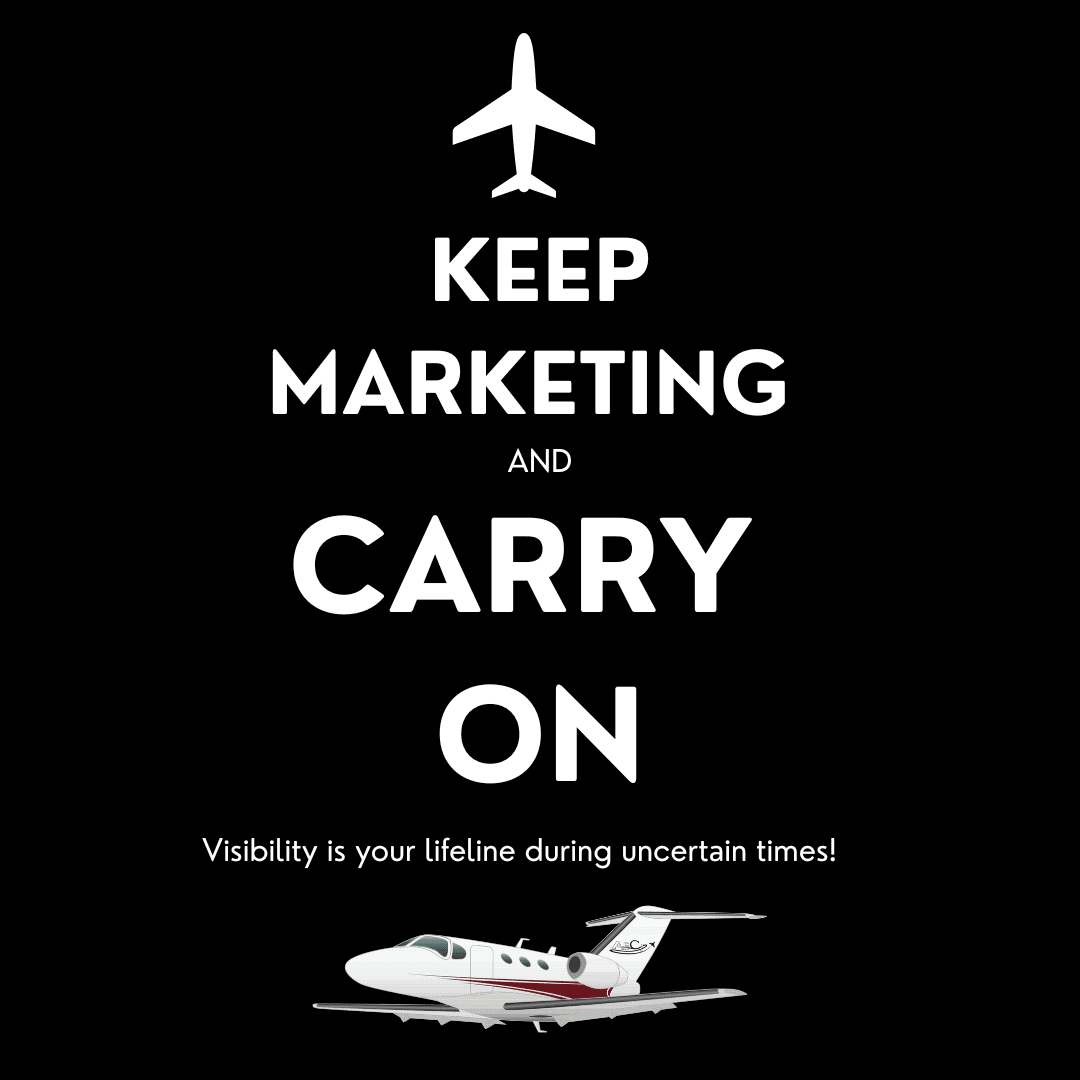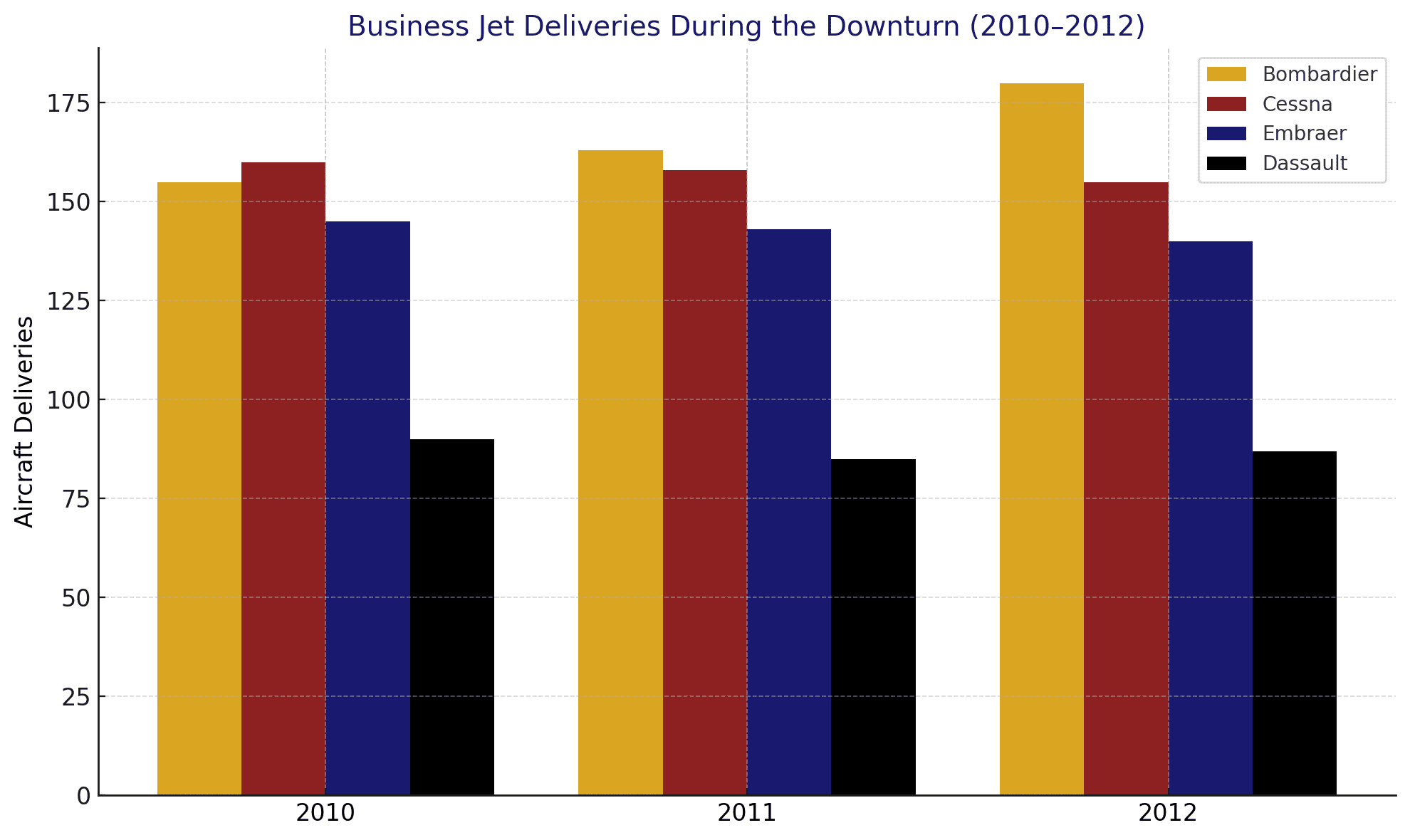In times of economic uncertainty, one of the first budget items to hit the chopping block is often marketing. From Fortune 500 companies to small aviation businesses, leaders under pressure to reduce costs often view marketing as discretionary spending. However, history, data, and current trends tell a very different story: pulling back on marketing during a downturn can end up costing far more than it saves.

The Historical Precedent: Brands That Grew During Recessions
Marketing through a recession is not a new idea. In fact, some of the world’s most successful companies solidified their market dominance by increasing their visibility when competitors went silent.
During the Great Depression, Kellogg’s doubled its advertising spend while its rival, Post, slashed their budget. Kellogg’s emerged as the category leader—a title it has held ever since. Similarly, in the 2008 financial crisis, companies like Amazon and Domino’s Pizza doubled down on marketing and emerged stronger and more dominant.
In aviation, Bombardier Business Aircraft maintained robust marketing efforts during the early 2010s downturn and saw increased brand visibility, lead generation, and ultimately sales in the years to come, even as competitors scaled back.

Visibility is a Non-Negotiable
In the aviation industry—where sales cycles are long, purchases are considered, and trust is paramount—visibility is everything. If potential clients aren’t hearing from you, they’re not thinking about you. And if they’re not thinking about you, they’re not buying from you.
Marketing is how you stay top of mind. It’s how you demonstrate thought leadership, communicate value, and build the trust required for high-value transactions.
The Wall Street Journal recently reported that top marketers across sectors are under pressure to justify budgets but are being urged to stay visible due to brand equity risks. “Cutting back might deliver short-term savings, but at a longer-term cost to brand health,” the article warns (WSJ).
And it’s not just theory—brands that maintain or increase visibility during downturns consistently outperform their competitors in the recovery phase. A McGraw-Hill study of 600 companies during the 1981–82 recession found that those who maintained or increased advertising saw 256% higher sales post-recession than those who cut back.
What Happens When You Cut Marketing in a Downturn?

Cutting Marketing Can Actually Increase Costs
Many aviation business leaders assume that pausing marketing saves money. But in reality, it often leads to:
- Higher customer acquisition costs when marketing resumes because you’ve lost momentum
- Brand erosion, which can take years (and major investment) to rebuild
- Empty sales pipelines, delaying recovery even when the economy bounces back
Instead of pulling back entirely, the smarter move is to adjust your marketing strategy—not eliminate it.
Strategic Aviation Marketing in Lean Times
When budgets are tight, every marketing dollar needs to pull its weight. That’s where working with a flexible, niche-focused partner like ABCI becomes a strategic advantage.
Aviation Marketing Options During a Downturn

- ABCI Clients Stay 3 Years, 4 Months On Average—With No Contracts
While most agencies lock clients into long-term contracts, ABCI takes a different approach: no contracts at all. Our clients stay not because they have to—but because it works.
This level of retention is virtually unheard of in B2B marketing, where the average client-agency relationship lasts less than 12 months. ABCI’s average of 3 years and 4 months speaks volumes about the value, trust, and ROI we provide.
- Low-Risk, High-ROI Campaigns
Trade shows can cost upwards of $50,000 when you factor in booth fees, travel, hotels, and staff time. And that’s assuming they even happen as scheduled. Meanwhile, targeted digital campaigns run by ABCI can be launched in a matter of days for a fraction of the cost, with clear metrics and measurable ROI.
- Ghostwriting, Batch Content and Drip Campaigns
Instead of producing content on the fly (or not at all), ABCI helps clients build sustainable systems—strategically planning and batching months of content in advance and using automated email and social media drip campaigns to nurture leads.
This creates consistency without increasing cost, and ensures you’re staying top-of-mind with prospects even during slower quarters.
- SEO and Visibility That Compounds Over Time
Organic search visibility is one of the few investments that continues to deliver returns long after the initial effort. ABCI’s content strategies include SEO best practices that position your company as an industry leader—not just for this quarter, but for years to come.
Current Trends: What the Data Says in 2025
Economic indicators are mixed heading into Q2 2025. According to the latest Bureau of Labor Statistics data, inflation rose to 3.2%, while aviation trade show attendance and exhibit space bookings are down nearly 18% from pre-pandemic levels. Meanwhile, digital marketing spend in the aviation sector continues to climb, albeit modestly.
Forbes notes that “companies are cutting back on big-ticket event spending and reallocating toward digital campaigns that deliver clearer ROI.” This shift is reshaping the aviation marketing landscape.
And according to Business Insider, marketers are focused on proving results: “Budgets are under scrutiny, and the pressure is on to show how every dollar drives value.”
This is exactly the environment where ABCI thrives—using data to guide strategy and continually optimize for results.
The ABCI Difference
In an uncertain economy, what you don’t do can be just as damaging as what you do.
- You can’t afford to go silent.
- You can’t afford to guess.
- You can’t afford to waste money on massive in-house departments, rigid plans or one-size-fits-all agencies.
ABCI gives you the ability to stay visible, stay nimble, and stay competitive—without long-term contracts or high-risk spending. We work exclusively with aviation companies, so we understand the long sales cycles, compliance challenges, and customer expectations in this space.
And we get results.
Final Thoughts: Visibility is the Lifeline
If your brand isn’t visible, it might as well not exist. That’s a harsh reality in any industry—but especially in aviation, where deals are complex, relationships matter, and trust is everything.
Cutting marketing might seem like a fast fix. But it’s the most expensive mistake you can make.
Instead, let’s talk about how to make your marketing smarter. Let’s focus on strategies that stretch your budget without shrinking your visibility.
We invite you to join us for a low-pressure Strategy Consultation.
Because in uncertain times, the companies that keep showing up are the ones who keep growing.
Podcast: Play in new window | Download
Subscribe: Spotify | Amazon Music | RSS
